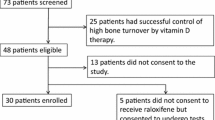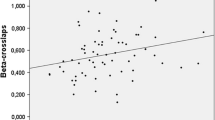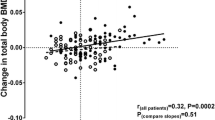Abstract
The literature data suggest a positive effect of thiazide diuretic treatment on bone health both by increasing bone mineral density and by decreasing the risk of fracture. The protective effect of thiazides seems to be linked both to the dosage and to the duration of treatment; moreover, the protective effects of thiazides in preserving bone mass and in decreasing the risk of fractures does not last long after discontinuation of treatment. Thiazides influence bone health by means of different mechanisms. In fact, they increase renal calcium reabsorption by inhibiting the sodium chloride cotransporter in the distal tubule, thus increasing sodium urinary excretion and decreasing urinary calcium excretion. Still, thiazides contribute to maintaining calcium homeostasis by increasing calcium intestinal absorption. Moreover, thiazides have a direct effect on bone cells, especially on osteoblast differentiation and bone mineral formation. Finally, it was suggested that thiazides prevent bone loss as they decrease the acid production by means of inhibition of carbonic anhydrase activity in the osteoclasts. The dual action shown by thiazides on both osteoblasts and osteoclasts could explain the reduced bone remodeling observed in patients taking these drugs, in the absence of changes in plasma parathyroid hormone levels. In conclusion, thiazides might play an interesting role in osteoporosis management, particularly in those patients affected by both hypertension and osteoporosis, but efficacy in reducing fractures and the safety of this treatment must still be evaluated by means of further randomized controlled clinical trials which have the reduction in fractures as primary outcomes.

Similar content being viewed by others
References
Nishio K, Mukae S, Aoki S, Itoh S, Konno N, Ozawa K, Satoh R, Katagiri T. Congestive heart failure is associated with the rate of bone loss. J Intern Med. 2003;25:439–46.
Choi SH, An JH, Lim S, Koo BK, Park SE, Chang HJ, Choi SI, Park YJ, Park KS, Jang HC, Shin CS. Lower bone mineral density is associated with higher coronary calcification and coronary plaque burdens by multidetector row coronary computed tomography in pre- and postmenopausal women. Clin Endocrinol. 2009;71:644–51.
Aoki A, Murata M, Asano T, Ikoma A, Sasaki M, Saito T, Otani T, Jinbo S, Ikeda N, Kawakami M, Ishikawa SE. Association of serum osteoprotegerin with vascular calcification in patients with type 2 diabetes. Cardiovasc Diabetol. 2013;12:11. doi:10.1186/1475-2840-12-11.
Yang S, Nguyen ND, Center JR, Eisman JA, Nguyen TV. Association between hypertension and fragility fracture: a longitudinal study. Osteoporos Int. 2014;25:97–103.
Cappuccio FP, Meilahn E, Zmuda JM, Cauley JA. High blood pressure and bone-mineral loss in elderly white women: a prospective study. Study of osteoporotic fractures research group. Lancet. 1999;354:971–5.
Majumdar SR, Ezekowitz JA, Lix LM, Leslie WD. Heart failure is a clinically and densitometrically independent risk factor for osteoporotic fractures: population-based cohort study of 45,509 subjects. J Clin Endocrinol Metab. 2012;97:1179–86.
Rejnmark L, Vestergaard P, Heickendorff L, Andreasen F, Mosekilde L. Effects of thiazide- and loop-diuretics, alone or in combination, on calcitropic hormones and biochemical bone markers: a randomized controlled study. J Intern Med. 2001;250:144–53.
Fujita T, Chan JCM, Bartter FC. Effects of oral furosemide and salt loading on parathyroid function in normal subjects. Nephron. 1984;38:109–14.
Reichel H, Deibert B, Geberth S, Schmidt GH, Ritz E. Furosemide therapy and intact parathyroid hormone plasma concentrations in chronic renal insufficiency. Nephrol Dial Transplant. 1992;7:8–15.
Coe FL, Canterbury JM, Firpo JJ, Reiss E. Evidence for secondary hyperparathyroidism in idiopathic hypercalciuria. J Clin Invest. 1973;52:134–42.
Rejnmark L, Vestergaard P, Pedersen AR, Heickendorff L, Andreasen F, Mosekilde L. Dose-effect relations of loop- and thiazide-diuretics on calcium homeostasis: a randomized, double-blinded Latin-square multiple cross-over study in post- menopausal osteopenic women. Eur J Clin Invest. 2003;33:41–50.
Ooms ME, Lips P, Van Lingen A, Valkenburg HA. Determinants of bone mineral density and risk factors for osteo-porosis in healthy elderly women. J Bone Miner Res. 1993;8:669–75.
Heidrich FE, Stergachis A, Gross KM. Diuretic drug use and the risk for hip fracture. Ann Intern Med. 1991;115:1–6.
Rashiq S, Logan RFA. Role of drugs in fractures of the femoral neck. BMJ. 1986;292:861–3.
Cumming RG, Klineberg RJ. Psychotropics, thiazide diuretics and hip fractures in the elderly. Med J Aust. 1993;158:414–7.
Pierce RO, Perry A. The effect of thiazide diuretics on bone mineral metabolism. J Nat Med Assoc. 1998;90:46–50.
Ackerman DM, Hook JB. Historical background, chemistry, and classification. In: Eknoyan G, Martinez-Maldonado M, editors. The physiological basis of diuretic therapy in clinical medicine. Orlando: Grune & Stratton Inc; 1986. p. 1–25.
Mount DB, Delpire E, Gamba G, Hall AE, Poch E, Hoover RS, Hebert SC. The electroneutral cation-chloride cotransporters. J Exp Biol. 1998;201:2091–102.
Middler S, Pak CY, Murad F, Bartter FC. Thiazide diuretics and calcium metabolism. Metabolism. 1973;22:139–46.
Ellison DH. Salt-wasting disorders. In: DuBose Jr TD, Hamm LL, editors. Acid-base and electrolyte disorders. Philadelphia: Saunders; 2002. p. 311–34.
Schultheis PJ, Lorenz JN, Meneton P, Nieman ML, Riddle TM, Flagella M, Duffy JJ, Doetschman T, Miller ML, Shull GE. Phenotype resembling Gitelman’s syndrome in mice lacking the apical Na+- Cl- cotransporter of the distal convoluted tubule [In process citation]. J Biol Chem. 1999;273:29150–5.
Pak CYC. Medical management of nephrolithiasis in Dallas update 1987. J Urol. 1988;140:461–7.
Preminger GM, Pak CYC. Eventual attenuation of hypocalciuric response to hydrochlorothiazide in absorptive hypercalciuria. J Urol. 1987;137:1104–9.
Zerwekh J, Pak CYC. Selective effects of thiazide therapy on serum 1α,25-dihydroxyvitamin D and intestinal calcium absorption in renal and absorptive hypercalciurias. Metabolism. 1980;29:13–7.
Pak CYC. Physiological basis for absorptive and renal hypercalciurias. Am J Physiol. 1979;237:F415–23.
Bazzini C, Vezzoli V, Sironi C, Dossena S, Ravasio A, De Biasi S, Garavaglia M, Rodighiero S, Meyer G, Fascio U, Fürst J, Ritter M, Bottà G, Paulmichl M. Thiazide-sensitive NaCl-cotransporter in the intestine. Possible role of hydrochlorothiazide in the intestinal Ca2+ uptake. J Biol Chem. 2005;280:19902–10.
Gamba G. Molecular physiology and pathophysiology of electroneutral cation-chloride cotransporters. Physiol Rev. 2005;85(2):423–93.
Wasnich RD, Benfante RJ, Yano K, Heilbrun L, Vogel JM. Thiazide effect on the mineral content of bone. N Engl J Med. 1983;309(6):344–7.
LaCroix AZ, Wienpahl J, White LR, Wallace RB, Scherr PA, George LK, Cornoni-Huntley J, Ostfeld AM. Thiazide diuretic agents and the incidence of hip fracture. N Engl J Med. 1990;322(5):286–90.
Jones G, Nguyen T, Sambrook PN, Eisman JA. Thiazide diuretics and fractures: can meta-analysis help? J Bone Miner Res. 1995;10(1):106–11.
Brickman AS, Massry SG, Coburn JW. Changes in serum and urinary calcium during treatment with hydrochlorothiazide: studies on mechanisms. J Clin Invest. 1972;51(4):945–54.
Gesek FA, Friedman PA. Mechanism of calcium transport stimulated by chlorothiazide in mouse distal convoluted tubule cells. J Clin Invest. 1992;90(2):429–38.
Cruz DN. The renal tubular Na-Cl co-transporter (NCCT): a potential genetic link between blood pressure and bone density? Nephrol Dial Transplant. 2001;16(4):691–4.
Nicolet-Barousse L, Blanchard A, Roux C, Pietri L, Bloch-Faure M, Kolta S, Chappard C, Geoffroy V, Morieux C, Jeunemaitre X, Shull GE, Meneton P, Paillard M, Houillier P, De Vernejoul MC. Inactivation of the Na–Cl co-transporter (NCC) gene is associated with high BMD through both renal and bone mechanisms: analysis of patients with Gitelman syndrome and NCC null mice. J Bone Miner Res. 2005;20(5):799–808.
Mayan H, Vered I, Mouallem M, Tzadok-Witkon M, Pauzner R, Farfel Z. Pseudohypoaldosteronism type II: marked sensitivity to thiazides, hypercalciuria, normomagnesemia, and low bone mineral density. J Clin Endocrinol Metab. 2002;87:3254.
Kamel HK. Low-dose thiazide and bone density. Ann Intern Med. 2002;136:252–3.
Van Den Berg CJ, Tucker RM, Dousa TP. Idiopathic hypercalciuria: hydrochlorothiazide decrease urinary calcium without altered renal response to parathyroid hormone. J Clin Endocrinol Metab. 1982;55:23–6.
Dvorak MM, De Joussineau C, Carter DH, Pisitkun T, Knepper MA, Gamba G, Kemp PJ, Riccardi D. Thiazide diuretics directly induce osteoblast differentiation and mineralized nodule formation by interacting with a sodium chloride co-transporter in bone. J Am Soc Nephrol. 2007;18:2509–16.
Raisz LG, Simmons HA, Thompson WJ, Shepard KL, Anderson PS, Rodan GA. Effects of a potent carbonic anhydrase inhibitor on bone resorption in organ culture. Endocrinology. 1993;122:1083–6.
Hsu YJ, Yang SS, Cheng CJ, Liu ST, Huang SM, Chau T, Chu P, Salter DM, Lee HS, Lin SH. Thiazide-sensitive Na+-Cl− cotransporter (NCC) gene inactivation results in increased duodenal Ca2+ absorption, enhanced osteoblast differentiation and elevated bone mineral density. J Bone Miner Res. 2015;30:116–27.
Yang SS, Lo YF, Yu IS, Lin SW, Chang TH, Hsu YJ, et al. Generation and analysis of the thiazide sensitive Na+-Cl cotransporter (Ncc/Slc12a3) Ser707X knockin mouse as a model of Gitelman syndrome. Hum Mutat. 2010;31:1304–510.
Rezzonico R, Cayatte C, BourgetPonzio I, Romey G, Belhacene N, Loubat A, et al. Focal adhesion kinase pp125FAK interacts with the large conductance calciumactivated hSlo potassium channel in human osteoblasts: potential role in mechanotransduction. J Bone Miner Res. 2003;18(10):1863–71.
Boutahar N, Guignandon A, Vico L, LafageProust MH. Mechanical strain on osteoblasts activates autophosphorylation of focal adhesion kinase and proline rich tyrosine kinase 2 tyrosine sites involved in ERK activation. J Biol Chem. 2004;279:30588–9.
Pérez-Castrillon JL, Justo I, Sanz-Cantalapiedra A, Pueyo C, Hernández G, Dueñas A. Effect of the antihypertensive treatment on the bone mineral density and osteoporotic fracture. Curr Hypertens Rev. 2005;1:61–6.
Ott SM, LaCroix AZ, Scholes D, Ichikawa LE. Effects of three years of low-dose thiazides on mineral metabolism in healthy elderly persons. Osteoporos Int. 2008;19:1315–22.
Aung K, Htay T. Thiazide diuretics and the risk of hip fracture. Cochrane Database Syst Rev. 2011;. doi:10.1002/14651858.CD005185.pub2.
Ilić Katarina, Obradović N, Vujasinović-Stupar N. The relationship among hypertension, antihypertensive medications, and osteoporosis: a narrative review. Calcif Tissue Int. 2013;92:217–27.
Mahua Ghosh, Majumdar SR. Anthypertensive medications, bone mineral density, and fractures: a review of old cardiac drugs that provides new insights into osteoporosis. Endocrine. 2014;46:397–405.
Laerum E, Larsen S. Thiazide prophylaxis of urolithiasis. A double-blind study in general practice. Acta Med Scand. 1984;215:383–9.
Sowers MR, Wallace RB, Lemke JH. Correlates of mid-radius bone density among postmenopausal women: a community study. Am J Clin Nutr. 1985;41:1045–53.
Wasnich RD, Ross PD, Heilbrun LK, Vogel JM, Yano K, Benfante RJ. Differential effects of thiazide and estrogen upon bone mineral content and fracture prevalence. Obstet Gynecol. 1986;67:457–62.
Morton DJ, Barrett-Connor EL, Edelstein SL. Thiazides and bone mineral density in elderly men and women. Am J Epidemiol. 1994;139:1107–15.
Cauley JA, Cummings SR, Seeley DG, Black D, Browner W, Kuller LH, Nevitt MC. Effects of thiazide diuretic therapy on bone mass, fractures, and falls. The study of osteoporotic fractures research group. Ann Intern Med. 1993;118:666–73.
Bauer DC, Browner WS, Cauley JA, Orwoll ES, Scott JC, Black DM, et al. Factors associated with appendicular bone mass in older women. The study of osteoporotic fractures research group. Ann Intern Med. 1993;118:657–75.
Glynn NW, Meilahn EN, Charron M, Anderson SJ, Kuller LH, Cauley JA. Determinants of bone mineral density in older men. J Bone Miner Res. 1995;10:1769–77.
Orwoll ES, Bauer DC, Vogt TM, Fox KM. Axial bone mass in older women. Study of osteoporotic fractures research group. Ann Intern Med. 1996;124:187–96.
LaCroix AZ, Ott SM, Ichikawa L, Scholes D, Barlow WE. Low-dose hydrochlorothiazide and preservation of bone mineral density in older adults: a randomized, double- blind, placebo-controlled trial. Ann Intern Med. 2000;133:516–26.
Reid IR, Ames RW, Orr-Walker BJ, Clearwater JM, Horne AM, Evans MC, et al. Hydrochlorothiazide reduces loss of cortical bone in normal postmenopausal women: a randomized controlled trial. Am J Med. 2000;109:362–70.
Sigurdsson G, Franzson L. Increased bone mineral density in a population-based group of 70-year-old women on thiazide diuretics, independent of parathyroid hormone levels. J Intern Med. 2001;250:51–6.
Bolland MJ, Ames RW, Horne AM, Orr-Walker BJ, Gamble GD, Reid IR. The effect of treatment with a thiazide diuretic for 4 years on bone density in normal postmenopausal women. Osteoporos Int. 2007;18(4):479–86.
Taggart HM. Do drugs affect the risk of hip fracture in elderly women? J Am Geriatr Soc. 1988;36:1006–10.
Ray WA, Griffin MR, Downey W, Melton LJ 3rd. Long- term use of thiazide diuretics and risk of hip fracture. Lancet. 1989;1:687–90.
Felson DT, Sloutskis D, Anderson JJ, Anthony JM, Kiel DP. Thiazide diuretics and the risk of hip fracture. Results from the framingham study. JAMA. 1991;265:370–3.
Herings RM, Stricker BH, de Boer A, Bakker A, Sturmans F, Stergachis A. Current use of thiazide diuretics and prevention of femur fractures. J Clin Epidemiol. 1996;49:115–9.
Weiland SK, Ruckmann A, Keil U, Lewis M, Dennler H, Welzel D. Thiazide diuretics and risk of hip fractures among 70-79 year old women treated for hypertension. Eur J Pub Health. 1997;7(3):335–40.
Feskanich D, Willett WC, Stampfer MJ, et al. A prospective study of thiazide use and fractures in women. Osteoporos Int. 1997;7:79–84.
Schoofs MWCJ, van der Klift M, Hofman A, et al. Thiazide diuretics and the risk for hip fracture. Ann Intern Med. 2003;139:476–82.
Schlienger RG, Kraenzlin ME, Jick SS, Meier CR. Use of b-blockers and risk of fractures. JAMA. 2004;292:1326–32.
Rejnmark L, Vestergaard P, Mosekilde L. Reduced fracture risk in users of thiazide diuretics. Calcif Tissue Int. 2005;76(3):167–75.
Jones G, Nguyen T, Sambrook PN, Eisman JA. Thiazide diuretics and fractures: can meta-analysis help? J Bone Miner Res J Bone Miner Res. 1995;10:106–11.
Wiens M, Etminan M, Gill SS, Takkouche B. Effects of antihypertensive drug treatments on fracture outcomes: a meta-analysis of observational studies. J Intern Med. 2006;260:350–62.
Adams JS, Song CF, Kantorovich V. Rapid recovery of bone mass in hypercalciuric, osteoporotic men treated with hydrochlorothiazide. Ann Intern Med. 1999;130:658–60.
Sakhaee K, Nicar MJ, Glass K, et al. Postmenopausal osteoporosis as a manifestation of renal hypercalciuria with secondary hyperparathyroidism. J Clin Endocrinol Metab. 1985;61:368–73.
Ruiter R, Oei L, Visser LE, Peltenburg HG, Hofman A, Zillikens MC, Uitterlinden AG, Rivadeneira F, Stricker BH. The effect of thiazide and loop diuretics on urinary levels of free deoxypyridinoline: an osteoclastic bone-resorption marker. J Clin Pharm Ther. 2013;38:225–9.
Yu SL, Ho LM, Lim BC, Sim ML. Urinary deoxypyridinoline is a useful biochemical bone marker for the management of post- menopausal osteoporosis. Ann Acad Med Singapore. 1998;27:527–9.
Eastell R, Colwell A, Hampton L, Reeve J. Biochemical markers of bone resorption compared with estimates of bone resorption from radiotracer kinetic studies in osteoporosis. J Bone Miner Res. 1997;12:59–65.
Garnero P, Hausherr E, Chapuy MC, et al. Markers of bone resorption predict hip fracture in elderly women: the EPIDOS Prospective Study. J Bone Miner Res. 1996;11:1531–8.
Grieff M, Bushinsky DA. Diuretics and disorders of calcium homeostasis. Semin Nephrol. 2011;31:535–41.
Hall TJ, Schaueblin M. Hydrochlorothiazide inhibits osteoclastic bone resorption in vitro. Calcif Tissue Int. 1994;55:266–8.
Aubin R, Menard P, Lajeunesse D. Selective effect of thiazides on the human osteoblast-like cell line MG-63. Kidney Int. 1996;50:1476–82.
Poon IO, Braun U. High prevalence of orthostatic hypotension and its correlation with potentially causative medications among elderly veterans. J Clin Pharm Ther. 2005;30:173–8.
Curb JD, Applegate WB, Vogt TM. Antihypertensive therapy and falls and fractures in the systolic hypertension in the elderly program [abstract]. J Am Geriatr Soc. 1993;41(Suppl. 1):SA15.
Leipzig RM, Cumming RG, Tinetti ME. Drugs and falls in older people: a systematic review and meta-analysis: iI. Cardiac and analgesic drugs. J Am Geriatr Soc. 1999;47:40–50.
Woolcott JC, Richardson KJ, Wiens MO, Patel B, Marin J, Khan KM, Marra CA. Meta-analysis of the impact of 9 medication classes on falls in elderly persons. Arch Intern Med. 2009;169:1952–60.
Gribbin J, Hubbard R, Gladman JR, Smith C, Lewis S. Risk of falls associated with antihypertensive medication: population-based case–control study. Age Ageing. 2010;39:592–7.
Transbol I, Christensen MS, Jensen GF, et al. Thiazide for the postponement of postmenopausal bone loss. Metabolism. 1982;31:383–6.
Huen SC, Golfarb DS. Adverse metabolic effects of thiazides: implications for patients with calcium nephrolithiasis. J Urol. 2007;177:1238–43.
Tikellis C, Cooper ME, Thomas MC. Role of the renin–angiotensin system in the endocrine pancreas:implications for the development of diabetes. Int J Biochem Cell Biol. 2006;38(5–6):737–51.
Tham DM, Martin-McNulty B, Wang YX, et al. Angiotensin II is associated with activation of NF-κB-mediated genes and downregulation of PPARs. Physiol Genomics. 2002;11(1):21–30.
Caudarella R, Vescini F, Buffa A, et al. Citrate and mineral metabolism: kidney stones and bone disease. Front Biosci. 2003;8:s1084–106.
Jehle S, Zanetti A, Muser J, Hulter HN, Krapf R. Partial neutralization of the acidogenic Western diet with potassium citrate increases bone mass in postmenopausal women with osteopenia. J Am Soc Nephrol. 2006;17:3213–22.
Vescini F, Buffa A, La Manna G, Ciavatti A, Rizzoli E, Bottura A, Stefoni S, Caudarella R. Long–term potassium citrate therapy and bone mineral density in idiopathic calcium stone formers. J Endocrinol Invest. 2005;28:218–22.
Caudarella R, Vescini F. Urinary citrate and renal stone disease: the preventive role of alkali citrate treatment. Arch Ital Urol Androl. 2009;81:182–7.
Author information
Authors and Affiliations
Corresponding author
Ethics declarations
Conflict of interest
Renata Caudarella, Fabio Vescini, Elisabetta Rizzoli and Fabio Massimo Ulivieri declare no conflict of interest
Animal/Human Studies
This article does not contain any studies with human participants or animals performed by any of the authors.
Rights and permissions
About this article
Cite this article
Caudarella, R., Vescini, F., Rizzoli, E. et al. The Effect of Thiazides on Bone Markers, Bone Mineral Density and Fractures. Clinic Rev Bone Miner Metab 13, 173–184 (2015). https://doi.org/10.1007/s12018-015-9190-0
Published:
Issue Date:
DOI: https://doi.org/10.1007/s12018-015-9190-0




